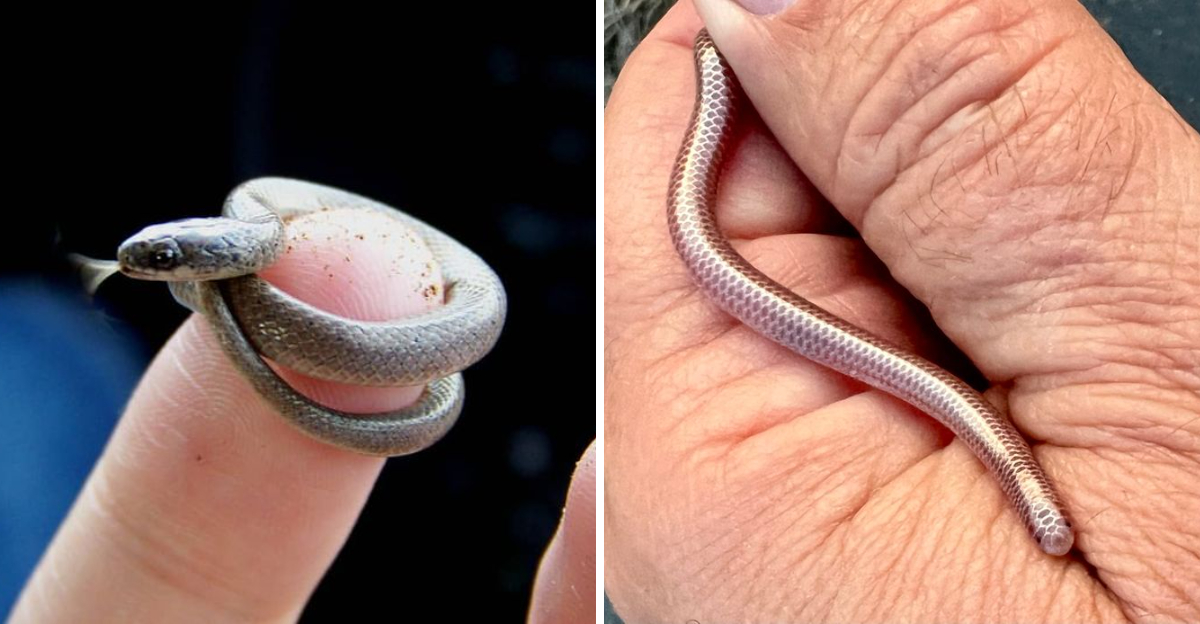The world of snakes is diverse and fascinating, with a multitude of species varying in size, color, and habitat. Among these, the tiniest serpents captivate with their diminutive charm and unique adaptations.
Let’s explore some of the smallest snakes that slither across our planet. These petite creatures, often overlooked due to their size, play crucial roles in their ecosystems and exhibit intriguing behaviors and characteristics.
1. Barbados Threadsnake
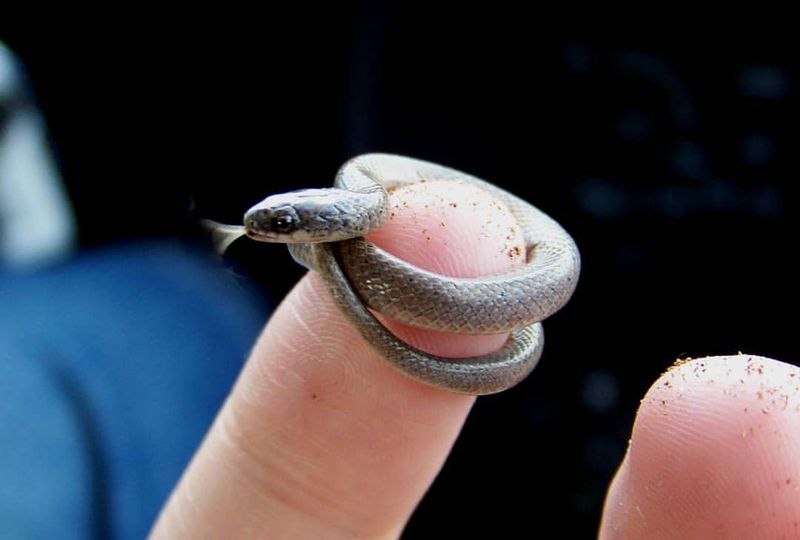
Ever heard of a snake that’s as thin as a spaghetti noodle and even shorter? Meet the Barbados Threadsnake. Found exclusively on the island of Barbados, this snake is often considered the smallest in the world.
Its slender body measures just about 4 inches in length, making it a true miniature marvel in the reptilian realm. This snake’s minuscule size is not its only intriguing feature. Living primarily in forests and gardens, it spends most of its time hidden under logs and in the leaf litter.
This elusive nature has made it a subject of mystery and fascination for herpetologists. Despite its small stature, it plays a significant role in pest control by feeding on ants and termites. Interestingly, the Barbados Threadsnake has adapted to its environment with remarkable efficiency.
Its small size allows it to burrow into the soil effortlessly, aiding in soil aeration. The discovery of this tiny snake adds to the ecological richness of Barbados, highlighting the island’s unique biodiversity. For anyone fascinated by reptiles, this snake exemplifies how size does not define importance.
2. Brahminy Blindsnake
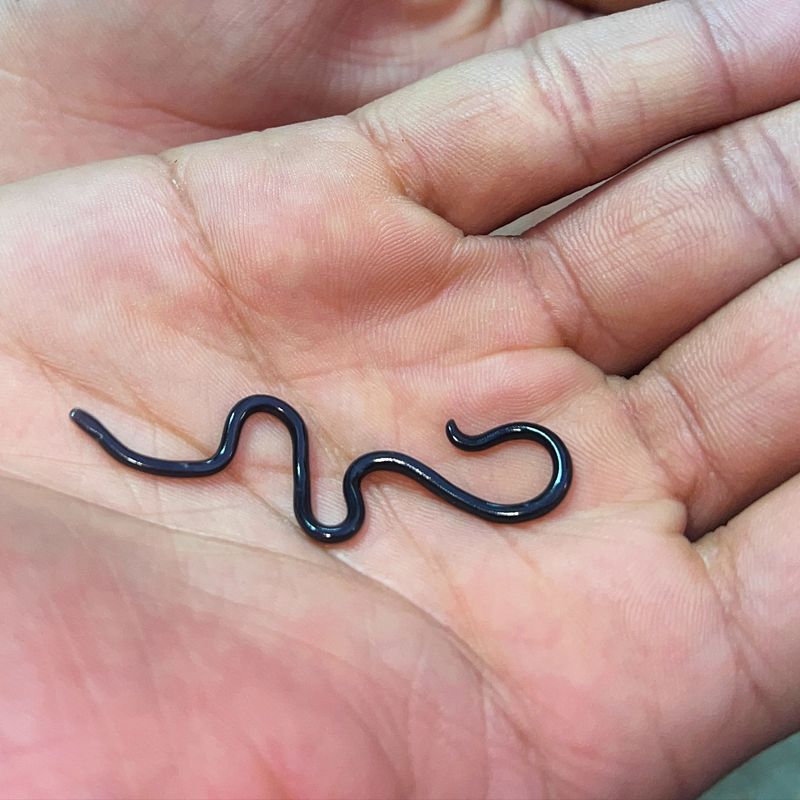
Recognized for its glossy, worm-like appearance, the Brahminy Blindsnake is often mistaken for an earthworm. Its diminutive size, usually under 6 inches, makes it one of the smallest snakes globally.
Originally native to Southeast Asia, this species has spread worldwide, often hitching rides with potted plants. This snake’s adaptability is remarkable. Unlike many of its snake cousins, the Brahminy Blindsnake thrives in urban environments, often found in gardens and flowerbeds.
Its diet consists mainly of ants and termites, playing a beneficial role in controlling these pest populations. Its presence is usually unnoticed due to its subterranean habits. The Brahminy Blindsnake reproduces through parthenogenesis, a rare trait among snakes.
This means it doesn’t require a mate to produce offspring, which has contributed to its successful spread across continents. Its resilience and adaptability make it an enthralling subject for those interested in urban wildlife. While often overlooked, this tiny snake is a testament to nature’s ingenuity.
3. Texas Threadsnake
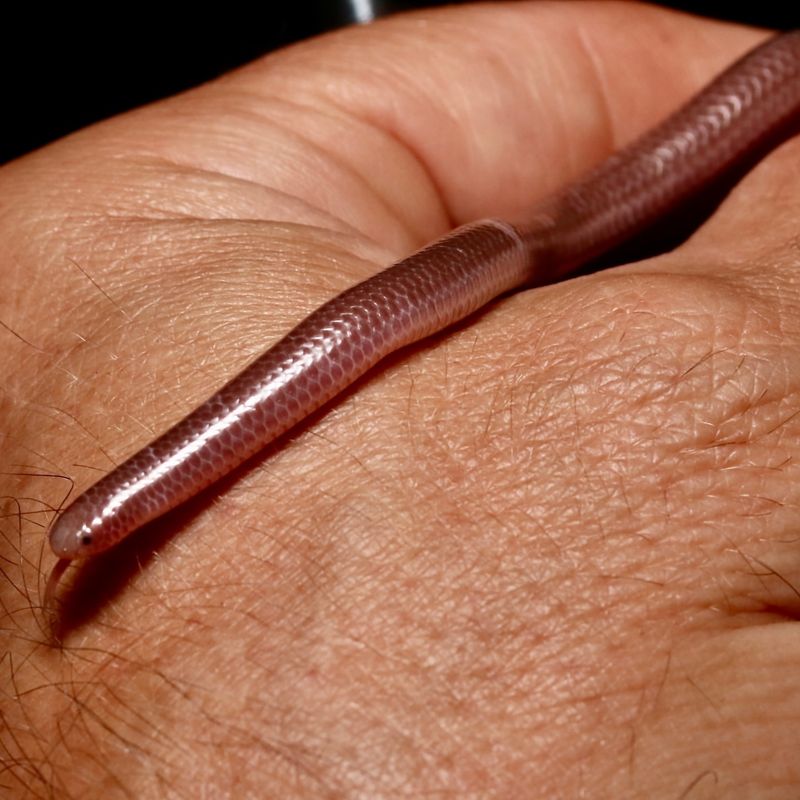
In the arid landscapes of Texas, the Texas Threadsnake quietly navigates its environment. Known for its thread-thin body and small size, rarely exceeding 6 inches, it is a marvel of adaptation to desert life.
Its pale coloration allows it to blend seamlessly with the sandy terrain, rendering it almost invisible to predators. This snake’s lifestyle is as unique as its appearance. It spends most of its life underground, emerging primarily during the night.
Feeding on small insects, it is an essential part of the desert ecosystem, aiding in the control of insect populations. Its presence, albeit discreet, is vital to maintaining ecological balance in its habitat. The Texas Threadsnake’s ability to thrive in such an environment is a testament to its resilience.
Despite the harsh conditions, it has adapted behaviors and physical traits that maximize its survival. Such small snakes provide insight into the incredible diversity of life forms that can exist in extreme conditions.
For those intrigued by desert wildlife, the Texas Threadsnake is a small wonder with big ecological contributions.
4. Indo-Chinese Worm Snake
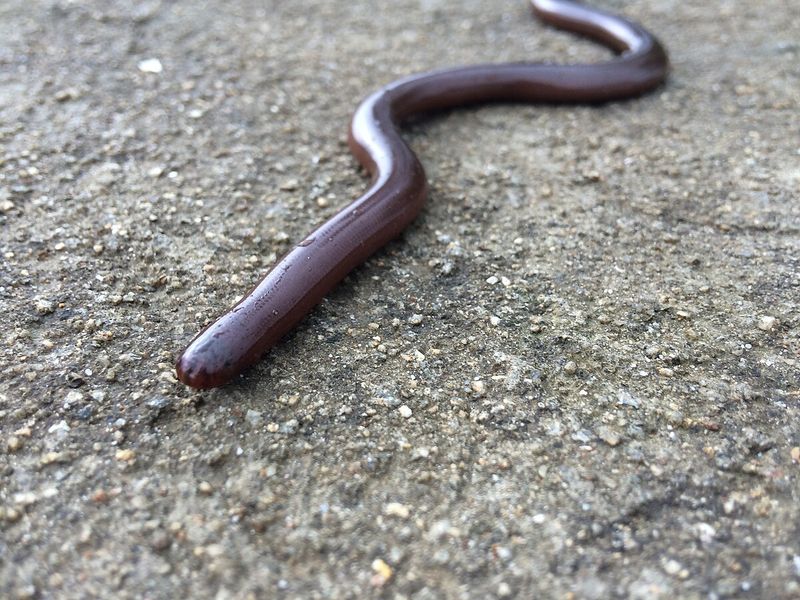
Nestled in the lush forests of Southeast Asia, the Indo-Chinese Worm Snake intrigues with its resemblance to an earthworm. Typically not exceeding 7 inches in length, this snake’s smooth, shiny scales and cylindrical body make it an expert at remaining unnoticed.
Primarily nocturnal, the Indo-Chinese Worm Snake emerges under the cover of darkness. It feeds on termites and ants, playing a crucial role in maintaining the balance of these insect populations. Despite its seemingly inconspicuous existence, it is a vital component of its ecosystem.
This snake’s ability to thrive in dense forest undergrowth is fascinating. It moves with ease through the leaf litter and soil, its body perfectly adapted to a subterranean lifestyle. Its presence highlights the complexity and interconnectedness of forest ecosystems.
5. Eastern Worm Snake
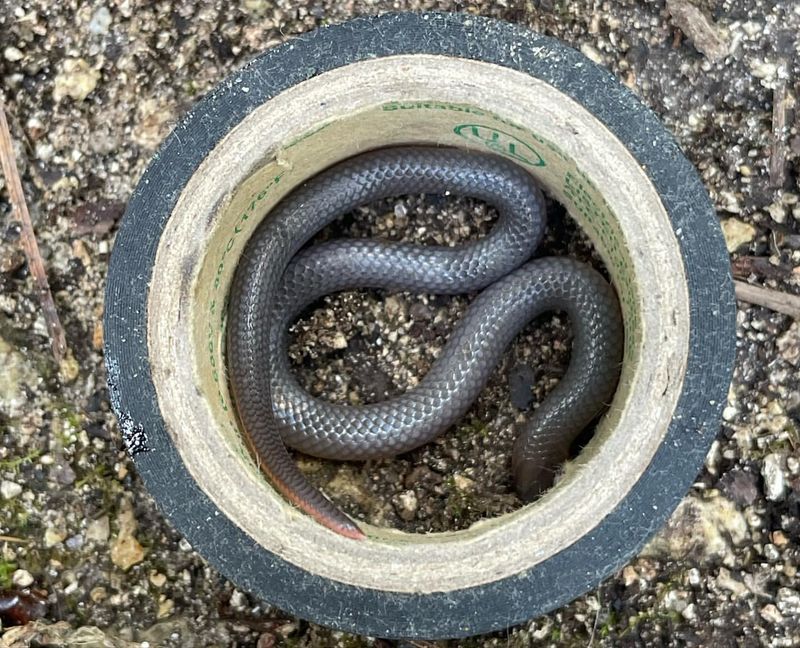
Among the deciduous forests of eastern North America resides the Eastern Worm Snake. This slender snake, rarely growing beyond 11 inches, often goes unnoticed due to its small size and worm-like appearance.
Its brownish-pink hue allows it to blend seamlessly with the forest floor. Living primarily underground, the Eastern Worm Snake is a master of concealment. It emerges mainly at night to feed on ants, termites, and small invertebrates.
Despite its secretive nature, it plays a critical role in controlling these pest populations. The lifestyle of the Eastern Worm Snake is one of adaptation and survival. Its ability to thrive in the subterranean world is a testament to its evolutionary success.
This snake highlights the diverse adaptations of small reptiles in forest environments. For those exploring the forest floor, the Eastern Worm Snake is a hidden gem worth discovering.
6. Borneo Blind Snake
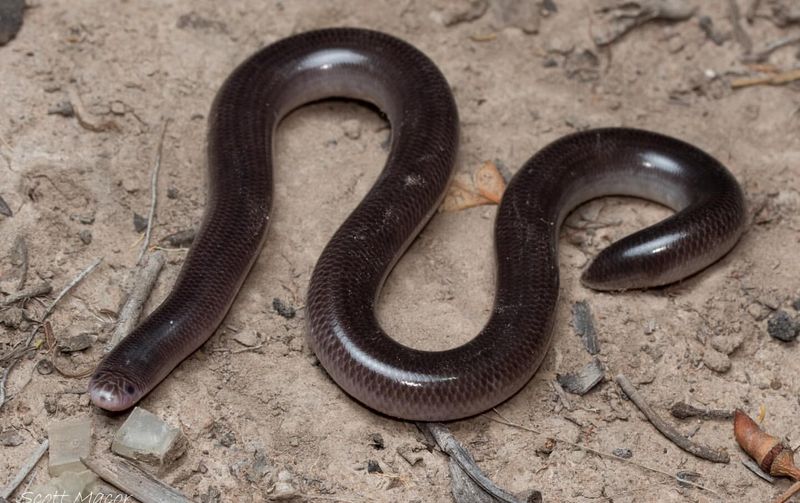
Deep in the tropical rainforests of Borneo, the Borneo Blind Snake navigates the moist, dense undergrowth. Measuring just around 6 inches, this snake’s small size and smooth, pinkish body help it mimic the earthworms it shares its habitat with.
This elusive snake spends much of its life underground or hidden under logs and leaf litter. Its diet primarily consists of ants and termites, making it an essential player in controlling these populations. Despite its hidden lifestyle, it is a vital part of the rainforest ecosystem.
The Borneo Blind Snake’s ability to remain largely undetected is a fascinating adaptation. Its subterranean habits and physical traits ensure it thrives in its rainforest surroundings.
7. Flowerpot Snake
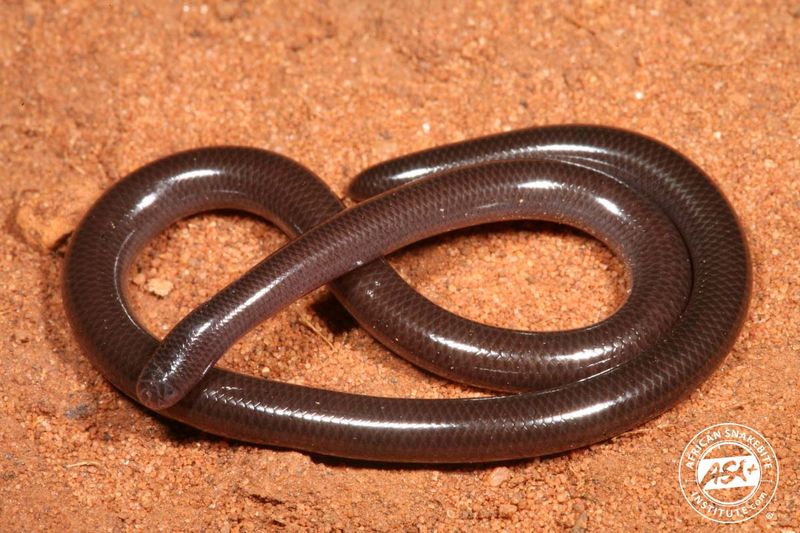
The Flowerpot Snake, named for its common occurrence in potted plants, is a tiny marvel often found in urban settings. This snake generally measures around 6 inches in length and bears a strong resemblance to an earthworm, with its glossy scales and slender body.
Native to Asia, the Flowerpot Snake has spread across the globe due to the gardening trade. It often goes unnoticed due to its small size and subterranean lifestyle, feeding primarily on ants and termites. This makes it beneficial in controlling these pest populations.
What sets the Flowerpot Snake apart is its mode of reproduction. It reproduces through parthenogenesis, allowing a single snake to colonize new areas independently.
This adaptability has led to its presence in many countries, often unnoticed. For garden enthusiasts, the Flowerpot Snake is a silent, beneficial presence.
8. Western Blind Snake
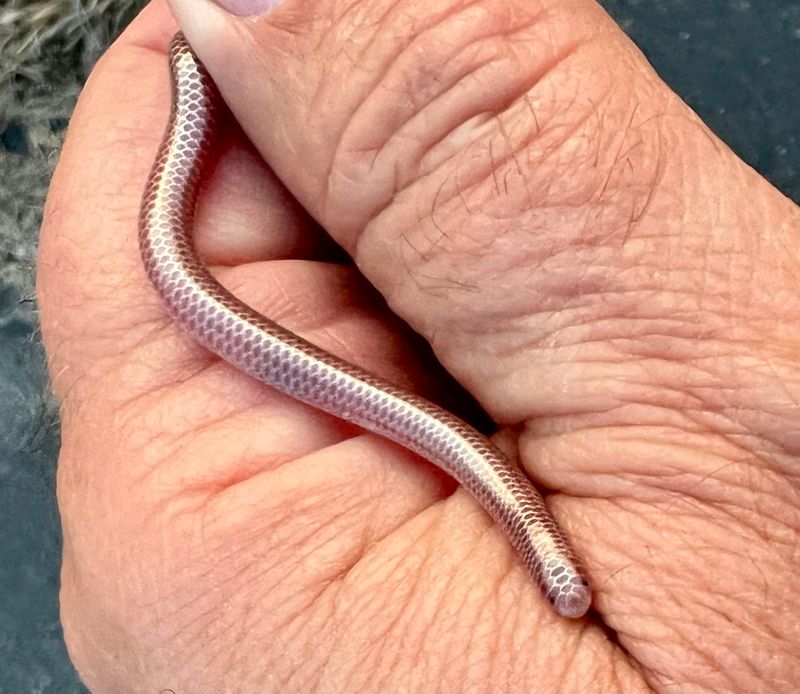
In the arid regions of the southwestern United States, the Western Blind Snake weaves its way through sandy soils and rocky crevices. This diminutive snake, typically under 8 inches, is often mistaken for a worm due to its glossy, pinkish appearance.
The Western Blind Snake is primarily nocturnal, emerging from its subterranean home at night to hunt ants and termites. Despite its small size, it plays a significant role in controlling these insect populations, contributing to the ecological balance of its habitat.
Adapted to desert life, this snake’s behavior and physiology reflect its environment. Its ability to thrive in harsh conditions demonstrates the resilience of small snake species. The Western Blind Snake represents the hidden yet vital life forms that make up this unique biome.

